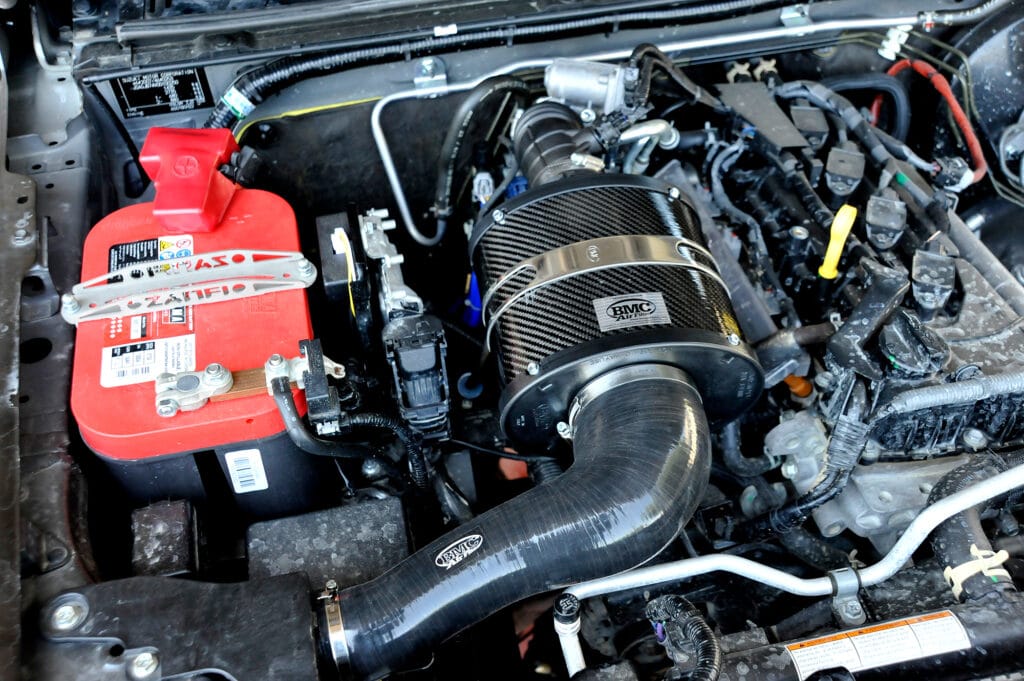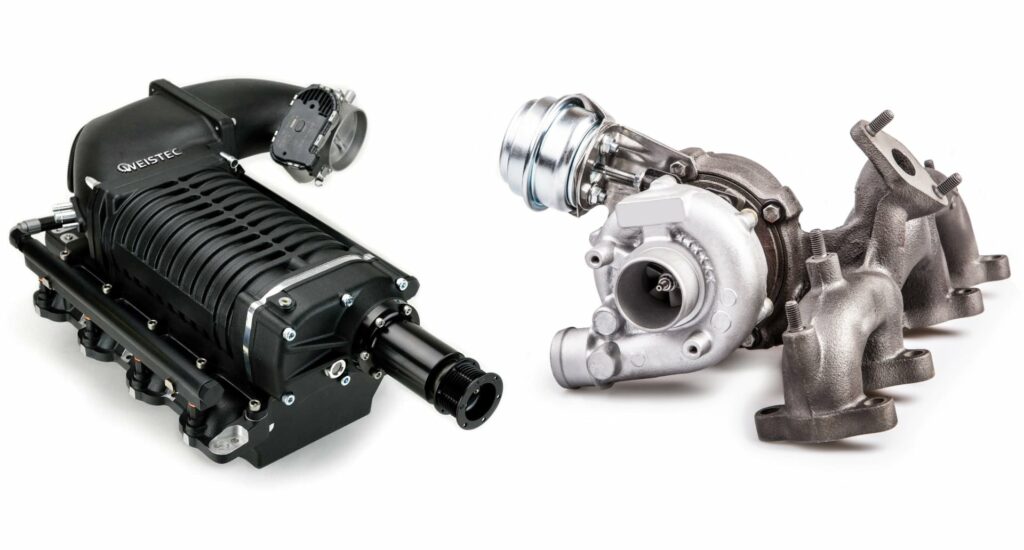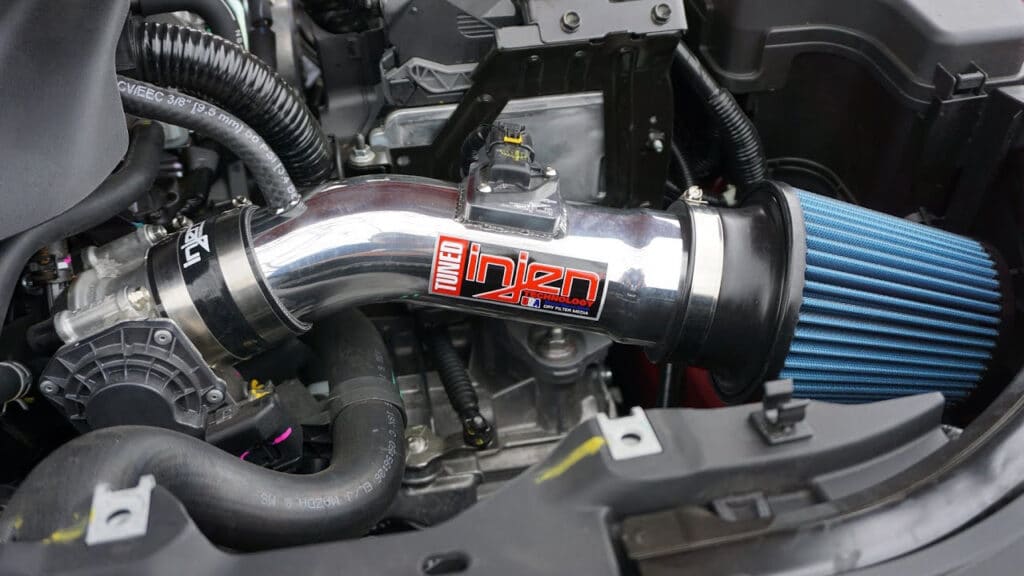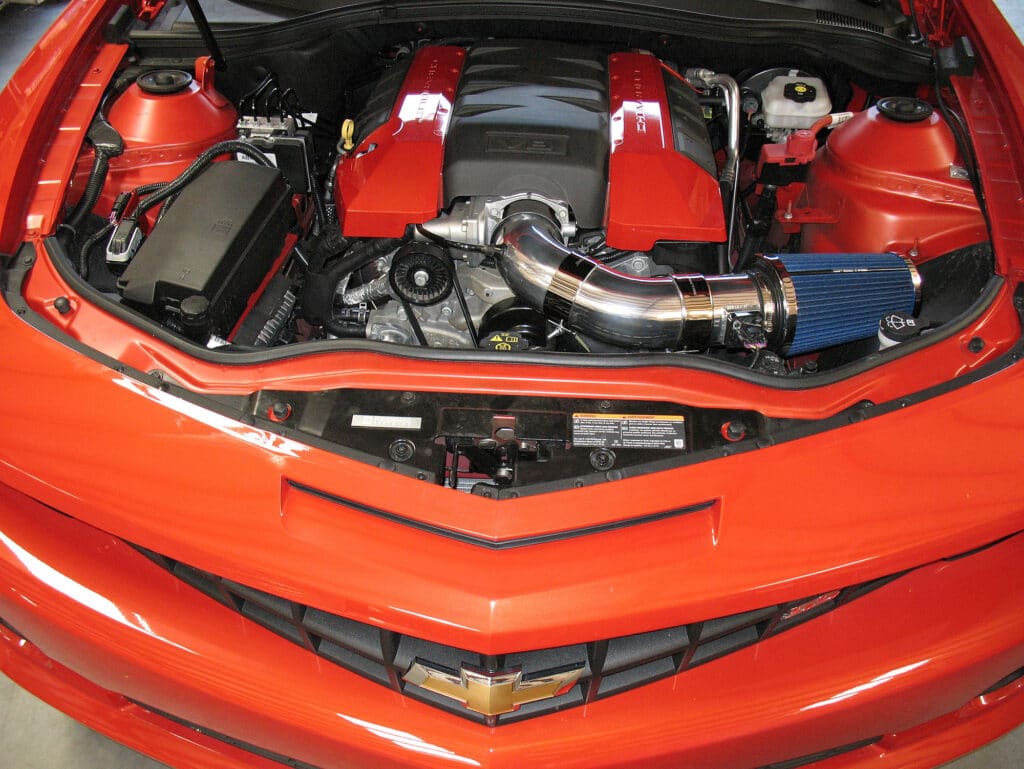Short ram and cold air intakes are the most easily accessible intake system upgrades — they’re easy to install and extremely affordable. That would explain why a vast majority of enthusiasts begin personalizing their car with one.
Both work on the same principle and do the same thing, but they do it differently. The common goal is to increase the volume and density of air entering the engine.
Volume = more air, and density = more oxygen. Your engine can benefit from these factors because it’s essentially an air pump. The more air it draws in, and the denser it is, the more efficient the combustion cycle will be, and the more power it’ll make. In theory, at least.
Whether or not these will give you any real-world gains depends on what other modifications you pair them with.
They’re a part of the collection of little things that add up — and that’s what modifying your car is all about, right? A bunch of small upgrades put together, compounding into one awesome build.
In this article, we’ll dig deeper into the differences and similarities between short ram intakes and cold air intakes.
What’s the Point of Upgrading the Intake System?

It’s simple — getting a higher volume of dense air into the combustion chamber. There are many ways to achieve this effect; it really comes down to the car you drive as each one has a differently designed intake system.
But there’s one thing that many cars have in common. The factory intake usually sacrifices performance in favor of noise and emissions regulations.
That’s why aftermarket upgrades are all designed to bypass the stock design to improve airflow and performance as a result. These include:
- Upgraded throttle bodies
- Plenum spacers
- Aftermarket intake manifolds
- Short ram intakes, and
- Cold air intakes.
Technically, turbochargers and superchargers can also be considered as intake system upgrades, but considering their complexity, they’re more appropriately categorized as forced induction.

For any intake or exhaust system upgrade to work properly, you need to get your ECU tuned so that it can adapt itself to the changed airflow characteristics. Otherwise, it will be unable to optimize your fuel-air mixture properly which can cause a variety of problems.
How Much Power to Expect From SRIs and CAIs
Realistically, intake system upgrades alone hardly result in any noticeable performance gain. It may be measurable on a dyno, but in real-world driving conditions, you won’t feel it. If you do, it will likely be a combination of louder intake sounds and the placebo effect.

You’re looking at a gain of anywhere between 2 hp to 5 hp. However, with other intake system modifications, a catback exhaust system, and an ECU remap, you should be able to make around 12 hp.
As we mentioned before, these gains are small and incremental, but they add up quickly when paired with other upgrades. This heavily depends on what car you drive, and how tunable your engine is.
Short Ram vs Cold Air Intake
The core construction of both these components is pretty much the same. It involves a cone filter attached to a set of piping that plugs directly into the intake manifold.
The main difference between short ram intake and cold air intakes has to do with the length of the piping and the placement of the air filter.

In many cars, the intake charge passes through a resonator, an air filter, and then into an inlet hose that connects to the intake manifold.
Both the short ram and cold air intake are designed to eliminate these restrictive devices and to keep the airflow as uninterrupted as possible. Let’s examine the differences between the two.
Cold Air Intake

As the name suggests, cold air intakes prioritize the density of air over having an unrestrictive design. This is achieved by repositioning the air filter outside the engine bay — far away from the heat of the engine, generally right behind the fender where it can draw cooler, oxygen-rich air.
That’s why the piping used in CAIs is much longer than what you see in short ram intakes. The longer piping also means more twists and bends which do interfere with the airflow, but not a lot. Definitely not as much as the stock intake system.
You can get extremely creative with the placement of your cold air intake. We’ve seen some really well executed builds where the cone filter is strategically placed right behind one of the headlights, with the actual lighting assembly removed and replaced with an air duct for a ram-air effect.
The same can be replicated in any part of your engine bay, it’s really up to you. You don’t even have to buy a readymade aftermarket CAI, you can even build your own.
Behind the fender is the most common placement though, since that area guarantees cold and dense air. The only challenge is the possibility of hydrolock when you drive over waterlogged parts of the street.
Short Ram Intake

Short ram intakes aim to keep the intake route as short and as unrestricted as possible. The goal is to increase the volume and velocity of air entering the intake manifold.
Because of their minimal design, they’re a lot cheaper to manufacture and easy to work with as compared to cold air intakes. Although there’s not much you can do with short ram intakes when it comes to placement considering how short the intake route is supposed to be.
The most vital disadvantage with short ram intakes is the possibility of heat soak due to being in close proximity to the engine. Short ram intake pipes heat up to a point where the air entering the engine is hot and less dense.
This actually hurts performance in some cases, but it is argued that the increased air volume and velocity can partially offset this effect. On the flip side, the possibility of hydrolock is negligible.

The word “ram” is a bit of a misnomer in the context of your conventional “short ram intake design”. True ram-air intakes are a completely different breed, let’s look at these in more detail.
What’s the Deal With Ram-Air Intakes?

Ram-air intakes refer to intake systems that are designed to make use of the dynamic air pressure created as a result of your car being in motion.
The purpose is to increase the static air pressure inside the intake manifold in order to allow for better airflow into the engine cylinders.
This intake design works best at the bottom of the bumper where high-pressure air can be forced in easily. It can also work near the grille or behind the headlight where it can take advantage of dynamic air pressure. Cone air filters just can’t provide the same effect.
SRI vs CAI: What’s Better?
Cold air intakes take the win in our books for sure. Despite the gains being microscopic without any other supporting mods, we find this mod to be way more effective than short ram intakes.
A lot of the short ram intakes on the market are mostly a marketing gimmick that makes cool sounds. Beyond that, there’s little to be gained from these.
What would you pick? Let us know by leaving a comment below!

